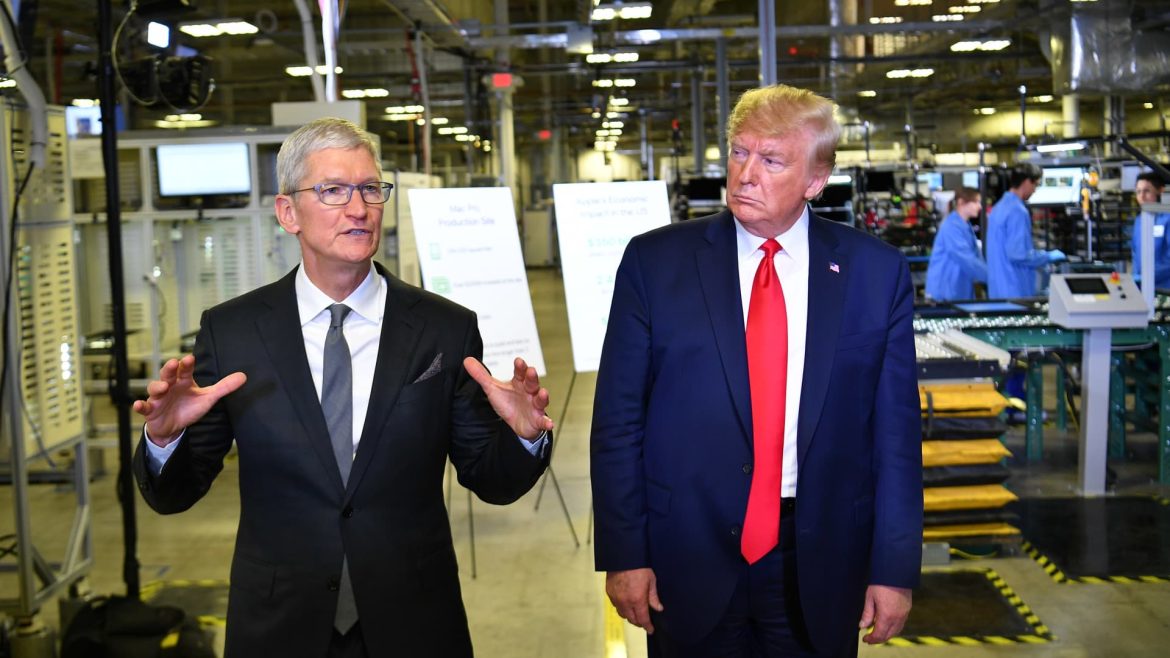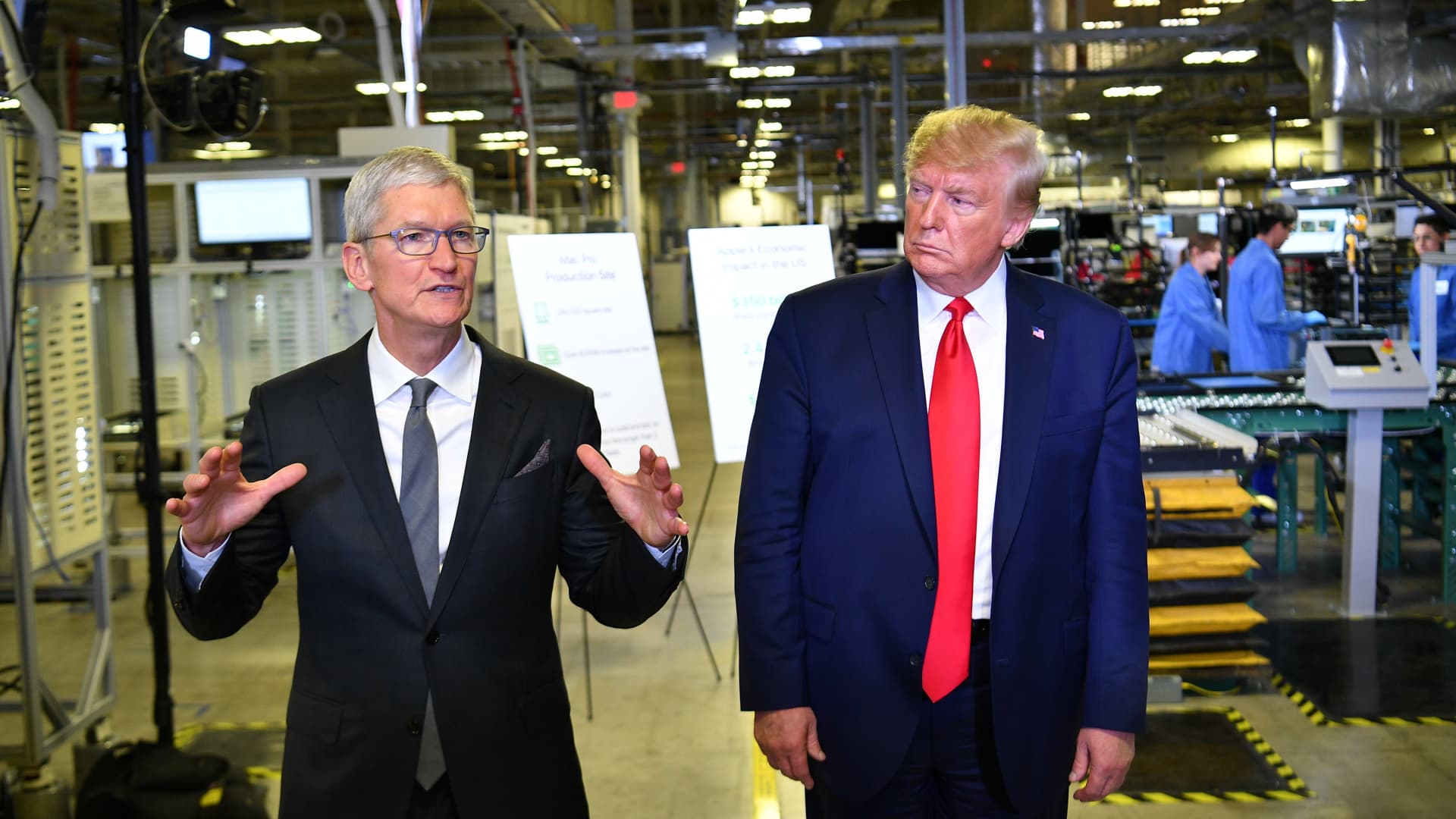Trump’s 25% Tariff Threat on Apple: A Deep Dive into Implications and Industry Impact
President Donald Trump recently issued a strong warning to Apple Inc., demanding that iPhones sold in the United States must be manufactured domestically. If Apple fails to do so, Trump declared on his social media platform Truth Social that the company would face a tariff of at least 25% on iPhones not made in the U.S. This move sends ripples across international supply chains, trade relations, and the consumer market.
—
Context: The Tariff Announcement and Its Scope
Trump’s declaration comes amid ongoing trade tensions and an administration agenda focusing on reshoring manufacturing and protecting American jobs. The statement put Apple CEO Tim Cook squarely in the spotlight, with Trump indicating he “long ago informed Tim” Cook about his expectations.
The stated tariff of 25% applies to iPhones imported into the U.S. that are manufactured outside American borders, with specific emphasis against production in countries like China and India. Trump’s remarks also clarified his disapproval of Apple increasingly producing iPhones in India, despite India’s expanding role in Apple’s global supply chain.
—
Apple’s Current Manufacturing Footprint and Supply Chain
Apple’s iPhone production has traditionally been centered in China, where nearly 90% of its devices were assembled. However, the company has progressively diversified its production globally, including ramping up manufacturing in India, where an estimated 25% or more of iPhones might be made by the end of the year.
This diversification was partly aimed at minimizing risks related to geopolitical tensions and tariffs, as well as tapping into emerging markets. Apple’s intricate supply chain includes components and assembly spread across multiple countries, optimizing cost and efficiency while navigating complex trade landscapes.
—
Impacts and Challenges of the 25% Tariff Proposal
Cost and Pricing Effects
A 25% tariff on imported iPhones would significantly increase costs for Apple, as the added fees would either squeeze profit margins or propagate to consumers through higher prices. Industry estimates suggest that to offset tariffs, Apple could raise prices by 17% to 18% in the U.S. market, substantially inflating the cost of the flagship devices.
This price hike would likely dampen demand and may push consumers to opt for older or lower-priced smartphone models or competitors’ offerings.
Supply Chain Disruptions
Apple’s global supply chain is highly optimized for efficiency and scale, with sourcing, manufacturing, and assembly in diverse regions. Relocating substantial production back to the U.S. would face logistical and cost hurdles. American manufacturing costs are historically higher due to wages, regulatory standards, and infrastructural challenges compared to Asian manufacturing hubs.
Moreover, adjusting supply lines, retraining workforce, and setting up specialized facilities could take years and significant capital investment.
Impact on India and Trade Negotiations
Trump’s demand discourages Apple from further expanding iPhone production in India, despite India’s reported offer of zero tariffs in negotiation talks. This stance complicates trade discussions and may affect India’s ambition to become a major technology manufacturing hub. It also affects broader U.S.-India trade relations and potential economic cooperation.
—
Responses and Industry Reactions
Apple’s stock prices saw an immediate drop following the tariff threat, reflecting investor concerns about potential increased costs and reduced competitiveness. Apple CEO Tim Cook’s recent engagement with U.S. officials suggests the company is actively navigating these challenges to mitigate impacts.
Additionally, the Trump administration has previously exempted smartphones, computers, and chips from certain reciprocal tariffs, revealing a complex tariff landscape that tempers some pressures on tech companies.
—
Broader Trade Environment and Tariff Policies
Trump’s call for tariffs is part of a larger trade posture emphasizing “reciprocal tariffs” aimed to promote U.S. manufacturing. However, such measures risk escalating trade wars and dampening global commerce.
Notably, electronics and smartphones’ exclusion from some tariff lists signals recognition of these industries’ critical role in the economy and sensitivity to price shocks. The administration’s inconsistent tariff policies have generated uncertainty in the market.
—
Conclusion: Complex Trade-offs in Domestic Manufacturing Push
The 25% tariff threat on Apple iPhones underscores a broader tension between nationalistic manufacturing agendas and globalized supply chains. Forcing Apple to relocate iPhone production domestically entails steep economic and logistical challenges, risking increased consumer prices and supply disruptions.
While intended to bolster U.S. manufacturing and reduce reliance on foreign production, such policies may backfire by making American consumers pay more or slowing technological innovation due to supply constraints. The evolving dynamic between Apple, the U.S. government, and international partners like India will be critical in shaping the future of smartphone manufacturing and trade relations.
The path forward will require balancing patriotic manufacturing goals with pragmatic considerations of cost, global supply integration, and market realities in an interconnected economy.





